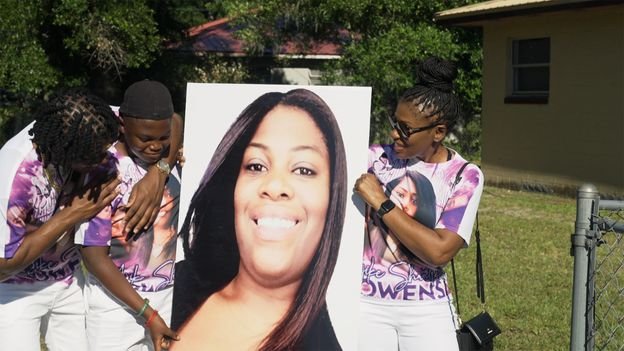
Director Geeta Gandbhir’s reconstruction of events has no narration, and doesn’t rely on witness interviews, but instead on a doorbell camera, which captures the sound of a shot being fired, and Owens’s son screaming to call 911. Police body cameras track paramedics trying to help Owens after she is shot. Later cameras follow, unrelentingly, as the children’s father breaks the news to them that their mother “isn’t coming back”. And cameras inside the police car show Susan Lorincz, not under arrest, sitting in the back, while a neighbour shouts, “why did you do it?”
Gandbhir tells the BBC that the footage first came to her as she was a family friend of Owens’s. Lawyers acting for the Owens family had requested the material from the police, and the family wanted to know if there might be anything to keep the case in the news. “There was about thirty hours of video about the case, including doorbell camera, bodycam and cell phone footage, detective interviews with people in the community, as well as audio recordings from Susan’s conversations with the police, when she had called them many, many, many times,” Gandbhir says. “It was a mess, but we managed to get through it, and that’s when I realised it might be a film.”
The footage shows that the first time police officers were called to Lorincz’s address because of a dispute with Ajike Owens was in February 2022, when Lorincz claimed that Owens had thrown a “No Trespassing” sign that belonged to Lorincz at her and hit her on the leg (Owens said that she had thrown it on the ground and was not aiming it at her neighbour.) No one was arrested.
Police are called out several times through the following year, as Lorincz makes emergency calls complaining that local kids, including Owen’s children, are tormenting her. “I’m a single woman, I work from home, I’m peaceful, I’m the perfect neighbour,” Lorincz says in another call to the police, when she’s complaining about neighbourhood children playing football on the grass near her house.

